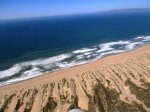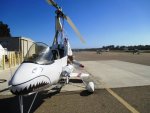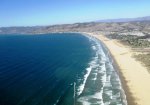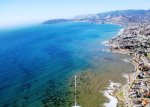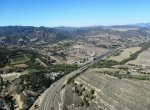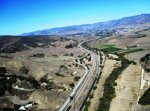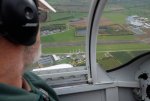You are using an out of date browser. It may not display this or other websites correctly.
You should upgrade or use an alternative browser.
You should upgrade or use an alternative browser.
We stripped her naked.
- Thread starter Vance
- Start date
- Joined
- Oct 30, 2003
- Messages
- 18,374
- Location
- Santa Maria, California
- Aircraft
- Givens Predator
- Total Flight Time
- 2600+ in rotorcraft
I knew this was your and the Predator's time Vance.....congratulations!!!!
Talk about tenacity.
That made one of us Ed.
I had a feeling it was going to take one more retest.
The weather looked like the deal breaker.
I am pleased with how things worked out.
Thank you.
- Joined
- Oct 30, 2003
- Messages
- 18,374
- Location
- Santa Maria, California
- Aircraft
- Givens Predator
- Total Flight Time
- 2600+ in rotorcraft
Thank you Jeff.
I hope to someday understand the FARs on a higher level.
I am glad I have my friend Jeff to call.
I could not open the legal opinion.
rcflier
Experienced Gyroplane Pilot
- Joined
- May 24, 2007
- Messages
- 705
- Location
- Nexø (Denmark)
- Aircraft
- Auto-Gyro MTO Sport 914 (upgraded MT-03)
- Total Flight Time
- 35 as PIC
Vance - a great CONGRATULATION from me.
Being honest, I had my doubts about you succeeding.
It's great to see you achieved your nearly unobtainable goal.
An example of persistence paying off. I hope I can learn from that.
Cheers
Erik
Being honest, I had my doubts about you succeeding.
It's great to see you achieved your nearly unobtainable goal.
An example of persistence paying off. I hope I can learn from that.
Cheers
Erik
- Joined
- Oct 30, 2003
- Messages
- 18,374
- Location
- Santa Maria, California
- Aircraft
- Givens Predator
- Total Flight Time
- 2600+ in rotorcraft
I had my doubts too Erik!
I had my doubts too Erik!
Thank you Erik; to be honest I had doubts too.
Terry has seen all of my neurological tests so he knows and understands all of my weaknesses because of the TBI. He felt it was his job to make certain I had found a way to mitigate each of them.
We talked a lot about mitigating risk.
It seemed to me there is just too much to remember for someone in the ninth percentile for unrelated short term memory.
I have not been able to make sense out of the FARs so that makes all of the rules unrelated short term memory.
I find trying to not make a mistake for fifteen and a half hours of rapid fire leading questioning stressful and stress further reduces my mental capability.
There is a lot to remember for the flying part too. For instance I would fail immediately if I made a poor aviation decision, ended a high rate of descent below 500 feet AGL, (600 feet AGL if my student is a sport pilot) and I had to remember who I was teaching in the scenario. If I forget to make a clearing turn or left out a description or rudder use during the maneuvers the retest is over. If my pretend student needed to be transition into a different gyroplane I needed to explain the differences as I was explaining and demonstrating the maneuvers.
I needed to be able to figure out and verbally correct what my recalcitrant student was doing that made him not meet the practical test standards and had to remember the pretend students invented history so there is no way to prepare.
I was confident in my flying until the weather and environment elevated the challenge.
The weather conditions were a challenge for many of the maneuvers; for example landing with a standard of plus 50 feet, minus nothing with a gusting quartering tail wind.
Doing the maneuvers at the airport prevented making the proper entrances to some of the maneuvers and the extra distraction of needed to break off the teaching and the maneuver if there was a communication from the tower directed toward us. There were lots of communications that did not concern us so I needed to pay close attention while teaching.
Some of the gyroplane CFIs I have flown with would not come close to meeting the standards and Terry wanted to make certain I did not add to that list. I don’t know how they passed their practical test.
The uncertainty and difficulty added to the fun of the adventure.
I have a whole new world to explore now; I am excited about the possibilities.
I am already getting lots of inquiries about training (Ed posted that I had met the standards for CFI on Facebook) that I can’t answer until the logistical details are worked out.
I have several people who want me to train in their machine and I am developing a protocol for that with my local FBO to inspect the machines before I fly them.
I am going to hang out at a friends fixed wing flight school tomorrow and continue my learning.
I love the way people are ready to help and I love to share the fun with my friends on the Rotary Wing Forum!
I had my doubts too Erik!
Vance - a great CONGRATULATION from me.
Being honest, I had my doubts about you succeeding.
It's great to see you achieved your nearly unobtainable goal.
An example of persistence paying off. I hope I can learn from that.
Cheers
Erik
Thank you Erik; to be honest I had doubts too.
Terry has seen all of my neurological tests so he knows and understands all of my weaknesses because of the TBI. He felt it was his job to make certain I had found a way to mitigate each of them.
We talked a lot about mitigating risk.
It seemed to me there is just too much to remember for someone in the ninth percentile for unrelated short term memory.
I have not been able to make sense out of the FARs so that makes all of the rules unrelated short term memory.
I find trying to not make a mistake for fifteen and a half hours of rapid fire leading questioning stressful and stress further reduces my mental capability.
There is a lot to remember for the flying part too. For instance I would fail immediately if I made a poor aviation decision, ended a high rate of descent below 500 feet AGL, (600 feet AGL if my student is a sport pilot) and I had to remember who I was teaching in the scenario. If I forget to make a clearing turn or left out a description or rudder use during the maneuvers the retest is over. If my pretend student needed to be transition into a different gyroplane I needed to explain the differences as I was explaining and demonstrating the maneuvers.
I needed to be able to figure out and verbally correct what my recalcitrant student was doing that made him not meet the practical test standards and had to remember the pretend students invented history so there is no way to prepare.
I was confident in my flying until the weather and environment elevated the challenge.
The weather conditions were a challenge for many of the maneuvers; for example landing with a standard of plus 50 feet, minus nothing with a gusting quartering tail wind.
Doing the maneuvers at the airport prevented making the proper entrances to some of the maneuvers and the extra distraction of needed to break off the teaching and the maneuver if there was a communication from the tower directed toward us. There were lots of communications that did not concern us so I needed to pay close attention while teaching.
Some of the gyroplane CFIs I have flown with would not come close to meeting the standards and Terry wanted to make certain I did not add to that list. I don’t know how they passed their practical test.
The uncertainty and difficulty added to the fun of the adventure.
I have a whole new world to explore now; I am excited about the possibilities.
I am already getting lots of inquiries about training (Ed posted that I had met the standards for CFI on Facebook) that I can’t answer until the logistical details are worked out.
I have several people who want me to train in their machine and I am developing a protocol for that with my local FBO to inspect the machines before I fly them.
I am going to hang out at a friends fixed wing flight school tomorrow and continue my learning.
I love the way people are ready to help and I love to share the fun with my friends on the Rotary Wing Forum!
Last edited:
JEFF TIPTON
Senior Member
- Joined
- Oct 30, 2003
- Messages
- 18,374
- Location
- Santa Maria, California
- Aircraft
- Givens Predator
- Total Flight Time
- 2600+ in rotorcraft
Sorry about that. changed the link and replaced it with the PDFfile.
Thank you Jeff; that seems simple enough and is aligned with my interpretation.
I admire your ability to sift through the FARs and find the answers.
My challenge is looking in the wrong place for the answer.
Thank you, Vance
eddie
RAF, turbo subaru 230hp
- Joined
- Jan 19, 2011
- Messages
- 1,683
- Location
- Polvadera,nm 87828
- Aircraft
- 230 HP turbocharged RAF
- Total Flight Time
- 8,000 plus
About the FAR's Vance,nobody can make sense of them!
I felt a sense of relief upon hearing of your success obtaining the CFI license.
Best regards,
I felt a sense of relief upon hearing of your success obtaining the CFI license.
Best regards,
- Joined
- Oct 30, 2003
- Messages
- 18,374
- Location
- Santa Maria, California
- Aircraft
- Givens Predator
- Total Flight Time
- 2600+ in rotorcraft
I felt a sense of relief upon hearing of your success obtaining the CFI license.
Best regards,
That makes two of us Eddie.
I continue to feel a remarkable range of emotions and relief is one of them.
StanFoster
Active Member
- Joined
- Nov 16, 2003
- Messages
- 17,139
- Location
- Paxton, Il
- Aircraft
- Helicycle N360SF
- Total Flight Time
- 1250
Vance - If you are in the 9th percentile for brain function...I must be down around 4 or 5.
You do more with 70% than most wont even attempt with 100%.
How soon will your first lesson for hire be?
You do more with 70% than most wont even attempt with 100%.
How soon will your first lesson for hire be?
- Joined
- Oct 30, 2003
- Messages
- 18,374
- Location
- Santa Maria, California
- Aircraft
- Givens Predator
- Total Flight Time
- 2600+ in rotorcraft
Vance - If you are in the 9th percentile for brain function...I must be down around 4 or 5.
You do more with 70% than most wont even attempt with 100%.
How soon will your first lesson for hire be?
I am in the ninth percentile specifically for unrelated short term memory Stan, not brain function.
I have challenges with aphasia.
My cognitive skills are only slightly damaged.
I have to get my training aircraft sorted out before I can accept money for training Stan. I am waiting to hear back from people on that.
I have some friends who want me to train them in their aircraft after they are built and phase one is completed. I am not in control of the time frame.
I spent today at a flight school in San Luis Obispo and learned a lot.
I am still getting a lot of pleasure out of saying I am now a CFI to those who inquire about the status of my adventure.
I suspect I undervalued the certificate emotionally so that I would not be too disappointed if I was not able to achieve our goal.
I am filled with exhilaration and pride now.
I am going to have to walk it back.
bryancobb
Junior Member
- Joined
- Aug 2, 2010
- Messages
- 5,337
- Location
- Cartersville, GA
- Aircraft
- Owned Brantly B-2b/Fly Kitfox III/Mini-500b
- Total Flight Time
- 1350
My Interpretation
My Interpretation
Vance,
Bear with me and see if what I say is not reasonable.
* Since forever, doinq anythinq in an aircraft for compensation or hire has required a Commercial Ratinq and at least a 2nd Class medical, even towinq a banner or transportinq checks.
* It is possible for a CFI to instruct, make loqbook entries, and siqn the loqbook for free if they choose. (Maybe for a friend?)
* If the student is qualified to be PIC, the CFI doesn`t need any medical at all.
* If the student is not qualified to be PIC, the CFI must be PIC and whether the student is payinq or not determines what class medical the CFI needs.
* If the student has no ratinq, and the instructional fliqht is done for free, only a 3rd Class is needed.
* If the student has no ratinq, and the instructional fliqht is done for a fee or other compensation, a 2nd Class is needed.
61.193 lists the nine priviledqes a CFI has. None of the nine says anythinq about charqinq or beinq compensated for the traininq and endorsements.
Doesn`t this sound reasonable?
I cannot think of an occasion when an airman can charqe for services as PIC without a Commercial Ratinq and a 2nd Class Medical, except where the FAR`s allow Salesman who is a Private Pilot to demonstrate an aircraft to potential customers while beinq compensated (since it is his job). The reqs also allow a non-commercial pilot to do fliqhts where people donate to a charity the pilot represents.
When you were performinq at airshows in The Predator as a Private Pilot, I would be surprised if you were compensated in any way.
My Interpretation
Where did you find that requirement Bryan?
The way I interpret 61.23 (3) (iv) is that with a third class medical is what is needed to exercise the privileges of a flight instructor and acting as pilot in command.
(3) Must hold at least a third-class medical certificate—
(i) When exercising the privileges of a private pilot certificate;
(ii) When exercising the privileges of a recreational pilot certificate;
(iii) When exercising the privileges of a student pilot certificate;
(iv) When exercising the privileges of a flight instructor certificate and acting as the pilot in command;
What you describe reads more like when a medical is not required for flight instruction.
(b) Operations not requiring a medical certificate. A person is not required to hold a medical certificate—
(1) When exercising the privileges of a student pilot certificate while seeking—
(i) A sport pilot certificate with glider or balloon privileges; or
(ii) A pilot certificate with a glider category rating or balloon class rating;
(2) When exercising the privileges of a sport pilot certificate with privileges in a glider or balloon;
(3) When exercising the privileges of a pilot certificate with a glider category rating or balloon class rating in a glider or a balloon, as appropriate;
(4) When exercising the privileges of a flight instructor certificate with—
(i) A sport pilot rating in a glider or balloon; or
(ii) A glider category rating;
(5) When exercising the privileges of a flight instructor certificate if the person is not acting as pilot in command or serving as a required pilot flight crewmember;
(6) When exercising the privileges of a ground instructor certificate;
(7) When serving as an Examiner or check airman and administering a practical test or proficiency check for an airman certificate, rating, or authorization conducted in a glider, balloon, flight simulator, or flight training device;
(8) When taking a practical test or a proficiency check for a certificate, rating, authorization or operating privilege conducted in a glider, balloon, flight simulator, or flight training device; or
(9) When a military pilot of the U.S. Armed Forces can show evidence of an up-to-date medical examination authorizing pilot flight status issued by the U.S. Armed Forces and—
(i) The flight does not require higher than a third-class medical certificate; and
(ii) The flight conducted is a domestic flight operation within U.S. airspace.
Vance,
Bear with me and see if what I say is not reasonable.
* Since forever, doinq anythinq in an aircraft for compensation or hire has required a Commercial Ratinq and at least a 2nd Class medical, even towinq a banner or transportinq checks.
* It is possible for a CFI to instruct, make loqbook entries, and siqn the loqbook for free if they choose. (Maybe for a friend?)
* If the student is qualified to be PIC, the CFI doesn`t need any medical at all.
* If the student is not qualified to be PIC, the CFI must be PIC and whether the student is payinq or not determines what class medical the CFI needs.
* If the student has no ratinq, and the instructional fliqht is done for free, only a 3rd Class is needed.
* If the student has no ratinq, and the instructional fliqht is done for a fee or other compensation, a 2nd Class is needed.
61.193 lists the nine priviledqes a CFI has. None of the nine says anythinq about charqinq or beinq compensated for the traininq and endorsements.
Doesn`t this sound reasonable?
I cannot think of an occasion when an airman can charqe for services as PIC without a Commercial Ratinq and a 2nd Class Medical, except where the FAR`s allow Salesman who is a Private Pilot to demonstrate an aircraft to potential customers while beinq compensated (since it is his job). The reqs also allow a non-commercial pilot to do fliqhts where people donate to a charity the pilot represents.
When you were performinq at airshows in The Predator as a Private Pilot, I would be surprised if you were compensated in any way.
Last edited:
JEFF TIPTON
Senior Member
The change in that line of thought changed when the sport pilot rating was created. At the sport pilot rating no commercial rating is required to be a CFI and a medical certificate is not required if you have a current a valied driver license.
It was mainly then it was realized that the CFI is paid based on the CFI rating, not the commercial rating otherwise the sport CFI could not receive compensation.
Referencing the legal interpretation the CFI only needs a third class medical as the CFI is being compensated by the CFI rating and not the commercial rating.
What is interesting in the interpretation the CFI is not considered as a passenger which allows a non-current pilot to carry a CFI for the purpose of flight instruction while the pilot is not current.
It was mainly then it was realized that the CFI is paid based on the CFI rating, not the commercial rating otherwise the sport CFI could not receive compensation.
Referencing the legal interpretation the CFI only needs a third class medical as the CFI is being compensated by the CFI rating and not the commercial rating.
What is interesting in the interpretation the CFI is not considered as a passenger which allows a non-current pilot to carry a CFI for the purpose of flight instruction while the pilot is not current.
- Joined
- Oct 30, 2003
- Messages
- 18,374
- Location
- Santa Maria, California
- Aircraft
- Givens Predator
- Total Flight Time
- 2600+ in rotorcraft
A nicely thought out and presented interpretation Bryan!
A nicely thought out and presented interpretation Bryan!
I often find I need to chase down the legal interpretation of the FARs because logic doesn’t seem to apply.
I am fortunate to have a friend like Jeff Tipton who often walks me through the more confusing FARs. As you can see he understands the history and reason behind things.
Thank you Jeff!
This is also part of why I looked things up and read them to the examiner during the oral rather than trying to remember the FAR and paraphrase the words. Terry made it clear if I misinterpreted a far the test came to an end. I found the sudden death nature of the practical test stressful.
At air shows it was hard to refuse free rooms particularly when I am staying at a motel were Ed has to clean the bathroom. I had to aggressively turn down free fuel. The compensation I have been offered is not insignificant and I have limited the range because of cost.
I had not gone after a second class medical because it seemed like too much work with a new demonstrated ability medical check ride. After the CFI adventure that seems like a walk in the sun.
A nicely thought out and presented interpretation Bryan!
Vance,
Bear with me and see if what I say is not reasonable.
* Since forever, doinq anythinq in an aircraft for compensation or hire has required a Commercial Ratinq and at least a 2nd Class medical, even towinq a banner or transportinq checks.
* It is possible for a CFI to instruct, make loqbook entries, and siqn the loqbook for free if they choose. (Maybe for a friend?)
* If the student is qualified to be PIC, the CFI doesn`t need any medical at all.
* If the student is not qualified to be PIC, the CFI must be PIC and whether the student is payinq or not determines what class medical the CFI needs.
* If the student has no ratinq, and the instructional fliqht is done for free, only a 3rd Class is needed.
* If the student has no ratinq, and the instructional fliqht is done for a fee or other compensation, a 2nd Class is needed.
61.193 lists the nine priviledqes a CFI has. None of the nine says anythinq about charqinq or beinq compensated for the traininq and endorsements.
Doesn`t this sound reasonable?
I cannot think of an occasion when an airman can charqe for services as PIC without a Commercial Ratinq and a 2nd Class Medical, except where the FAR`s allow Salesman who is a Private Pilot to demonstrate an aircraft to potential customers while beinq compensated (since it is his job). The reqs also allow a non-commercial pilot to do fliqhts where people donate to a charity the pilot represents.
When you were performinq at airshows in The Predator as a Private Pilot, I would be surprised if you were compensated in any way.
I often find I need to chase down the legal interpretation of the FARs because logic doesn’t seem to apply.
I am fortunate to have a friend like Jeff Tipton who often walks me through the more confusing FARs. As you can see he understands the history and reason behind things.
Thank you Jeff!
This is also part of why I looked things up and read them to the examiner during the oral rather than trying to remember the FAR and paraphrase the words. Terry made it clear if I misinterpreted a far the test came to an end. I found the sudden death nature of the practical test stressful.
At air shows it was hard to refuse free rooms particularly when I am staying at a motel were Ed has to clean the bathroom. I had to aggressively turn down free fuel. The compensation I have been offered is not insignificant and I have limited the range because of cost.
I had not gone after a second class medical because it seemed like too much work with a new demonstrated ability medical check ride. After the CFI adventure that seems like a walk in the sun.
bryancobb
Junior Member
- Joined
- Aug 2, 2010
- Messages
- 5,337
- Location
- Cartersville, GA
- Aircraft
- Owned Brantly B-2b/Fly Kitfox III/Mini-500b
- Total Flight Time
- 1350
If the FAA Leqal department has qotten involved in this question...all bets are off. Thanks Jeff. I stand corrected. The black-and-white interpretations that come out of the leqal department have always been illoqical and unreasonable.
Remember when the leqal interpretation became that Sport CFI`s dual qiven was worthless to be applied to hiqher ratinqs? That was not even the intent of the req`s author but leqal said it was now the law!
Remember when the leqal interpretation became that Sport CFI`s dual qiven was worthless to be applied to hiqher ratinqs? That was not even the intent of the req`s author but leqal said it was now the law!
JEFF TIPTON
Senior Member
I can agree with that assessment Bryan.
There does seem to be a double standard involved. Why does sport pilot hours not count toward a higher rating, yet the IFR training given by a CFI counts toward the hours required by a pilot for there IFR rating as the check ride requires hours with a CFII.
To me there is not much difference between a CFII signing off on the instrument check ride and the CFI signing off on the sport hours and the private pilot check ride.
The important thing to remember is the legal interpretations will change with changes in the wording of the regulations. That was made clear in one of the interpretations that I posted. We just need to figure what wording needs to be changed and petition for the change.
There does seem to be a double standard involved. Why does sport pilot hours not count toward a higher rating, yet the IFR training given by a CFI counts toward the hours required by a pilot for there IFR rating as the check ride requires hours with a CFII.
To me there is not much difference between a CFII signing off on the instrument check ride and the CFI signing off on the sport hours and the private pilot check ride.
The important thing to remember is the legal interpretations will change with changes in the wording of the regulations. That was made clear in one of the interpretations that I posted. We just need to figure what wording needs to be changed and petition for the change.
PW_Plack
Active Member
Since forever, doinq anythinq in an aircraft for compensation or hire has required a Commercial Ratinq and at least a 2nd Class medical, even towinq a banner or transportinq checks.
Brian, lots of things have always been legal to do for compensation in an aircraft without a Class II. Even ten years ago, nobody would have felt you needed a Class II med to teach someone to knit or whittle just because it happened in a flying airplane.
The two activities you cite are both considered "transporting persons or property for hire." FAA Legal seems to have concluded that teaching someone to fly an aircraft for hire is not the same as transporting him for hire.
- Joined
- Oct 30, 2003
- Messages
- 18,374
- Location
- Santa Maria, California
- Aircraft
- Givens Predator
- Total Flight Time
- 2600+ in rotorcraft
This is a good example of the challenge.
This is a good example of the challenge.
Bryan, a CFI who knows the FARs fairly well misinterprets the meaning.
During the oral with Terry that would have been a fail.
The practical test standard is to know the material on an instructional level; in Terry’s opinion I needed to be able to find the relevant FAR and correctly explain the meaning. I find this particularly challenging and yet I understand the reasoning.
I may need to look two or three places in the FARs to understand and extract the correct answer.
For example; can I train a Sport pilot in The Predator with a gross weight of 1,400 pounds?
It is not a simple answer and I need to be able to explain it to the student in its entirety along with; is it a good idea?
I flew up to San Luis Obispo Sunday and met and had lunch with two just over a hundred hour pilots and their CFI in a Cirrus out of Torrance. Near the end of lunch they both paid me the high compliment of; “you sound just like our CFI; we would feel safe flying with you.” I realized I had been reinforcing what their CFI had been saying. It was a lot of fun.
I took one of them up flying after lunch in winds that were gusting to 28kts. I would have taken all three but their CFI felt they should get going because of the weather.
This is a good example of the challenge.
If the FAA Leqal department has qotten involved in this question...all bets are off. Thanks Jeff. I stand corrected. The black-and-white interpretations that come out of the leqal department have always been illoqical and unreasonable.
Bryan, a CFI who knows the FARs fairly well misinterprets the meaning.
During the oral with Terry that would have been a fail.
The practical test standard is to know the material on an instructional level; in Terry’s opinion I needed to be able to find the relevant FAR and correctly explain the meaning. I find this particularly challenging and yet I understand the reasoning.
I may need to look two or three places in the FARs to understand and extract the correct answer.
For example; can I train a Sport pilot in The Predator with a gross weight of 1,400 pounds?
It is not a simple answer and I need to be able to explain it to the student in its entirety along with; is it a good idea?
I flew up to San Luis Obispo Sunday and met and had lunch with two just over a hundred hour pilots and their CFI in a Cirrus out of Torrance. Near the end of lunch they both paid me the high compliment of; “you sound just like our CFI; we would feel safe flying with you.” I realized I had been reinforcing what their CFI had been saying. It was a lot of fun.
I took one of them up flying after lunch in winds that were gusting to 28kts. I would have taken all three but their CFI felt they should get going because of the weather.
- Joined
- Oct 30, 2003
- Messages
- 18,374
- Location
- Santa Maria, California
- Aircraft
- Givens Predator
- Total Flight Time
- 2600+ in rotorcraft
Easy carefree flying!
Easy carefree flying!
I kept looking out the window at the slightly misty blue skies as I waded through some responsibilities.
I identified the things I could put off till tomorrow and wrapped things up around 11:00 and headed to the airport. It was top down t shirt weather.
I found joy in not having a clear gyroplane mission in mind after all the preparation work I had been doing for the CFI practical test.
I worked through preflight and found a new something had gone through the prop only doing a little cosmetic damage. It is surprising to me that it hasn’t happened more with all the stop and goes I have been doing. The winds tend to blow gravel onto the runway and despite the wheel pants things kicked up by the tires find their way into the prop.
Fuel was a little low (11 gallons) and a quick check of the fuel prices on AirNav made me aware I would save a couple of dollars getting fuel at Oceano (L52). I like to land with an hour of fuel on board and even though consumption is closer to 6 gallons per hour I figure it at 7 GPH. I feel it is a mistake to imagine that all twenty two gallons are useable.
I called Lockheed Martin and they felt the fog would stay offshore till 19:00 and the forecast called for winds of around 13kts in the afternoon.
77 degrees meant my flight suit would keep me warm.
I ate some jerky so I could have a late lunch at San Luis Obispo. I keep it on board as part of my emergency kit and it needs to be changed out from time to time.
It was 13:30 by the time I called “clear prop!” and the engine immediately settled into an unsteady idle.
The special observation ATIS had winds at 280 degrees and 13kts and the runway in use was 30.
I called ground at Mike for at taxi to 30 with Lima. I was careful to read back correctly so that I set a good example when instructing.
The run up went well and The Predator felt like she wanted to fly.
I asked for a straight out with a slight left and it was approved as requested. Immediately I was greeted with the magic words; “Experimental 142 Mike Golf, runway three zero clear for takeoff, slight left approved.”
I repeated the instructions, released the rotor brake and began the takeoff roll. By the time we made the centerline the rotor tachometer was showing 100 and I eased the cyclic half back. 120 rrpm, I was full back, 150 rrpm and release the prerotator button, navigation lights on, anti-collision lights on and landing lights on. 250 rrpm and advance the throttle with the nose coming up almost immediately. She lifted off at exactly 50kts indicated air speed and I soon saw 1,100 feet per minute on the vertical speed indicator. We were less than half way down the 8,017 foot runway when I backed her down to 1,950 engine rpm at 800 feet MSL (rotorcraft pattern altitude, 540 feet AGL). I could see some mist in the distance and estimated visibility at 25 miles because I could see the point at Avila Bay.
I kept her at 50kts indicated air speed making about 36kts of ground speed as we casually rumbled across the Santa Maria Valley toward the shoreline. There was a little water from the recent storms in the usually dry Santa Maria River that defines the border between Santa Barbara county and San Luis Obispo county.
It was fun passing my ground reference practice area without stopping to practice.
Because I was going to land at L52 I began my radio calls at ten miles to the south east and reached the shoreline five miles to the south. I find magic in flying up the shoreline at 500 feet AGL and less than 40kts of ground speed with our nose pointed out to sea from the onshore breeze. At three miles I announced climbing to 1,000 feet (pattern altitude at L52) inbound on the forty five, turning downwind mid field, base and final. Touch down was a nice as could be and I was off quickly and announcing clear of runway 29.
There was no one on frequency but I caught some waves from friends who own hangars there as I taxied to fuel.
I have yet to fill up at L52 without talking to someone at length and my friend Bob stopped by to congratulate me. Aviation in this area is a small community and he knew the whole story of my adventure. Bob is 69 and was preparing for the annual on his aging Cessna Cutlass. He had just finished swinging the landing gear. He is an EE and helped race my open fuel Sportster with electronic fuel injection at Bonneville. His hangar is too short so he had dug trenches in the dirt floor so he could swing the gear. He said I inspired him and he might go for his A&P certificate.
I was getting hungry so at 14:40 it was wheels up and we headed for San Luis Obispo through the Avilla Pass. Direct SBP is eight nautical miles north of L52 but we managed to turn it into 16 nautical miles.
I called SBP ATC with Xray and they bid me good afternoon and told me to report downwind for runway two niner.
It was a little bumpy in the pass and I kept her at 50kts IAS enjoying the rocking and rolling as the wind caressed the terrain.
No traffic and an uneventful landing and I was to contact ground when off the runway.
“Remind me why you can’t line up and wait with this one?” I explained that the pre-rotor starter interferes with the radio. She congratulated me on the test.
Lunch was great and on the way back I continued my slow pace and flew aimlessly in the general direction of Santa Maria.
As part of my post flight I checked the trip on the GPS and had spent a little over two hours to go 86 nautical miles. Direct would have been 44 nautical miles and my maximum ground speed was 64kts.
The flight was a lovely reminder of how carefree flying an open gyroplane can be and what I want to share with people who come to me for gyroplane instruction.
Easy carefree flying!
I kept looking out the window at the slightly misty blue skies as I waded through some responsibilities.
I identified the things I could put off till tomorrow and wrapped things up around 11:00 and headed to the airport. It was top down t shirt weather.
I found joy in not having a clear gyroplane mission in mind after all the preparation work I had been doing for the CFI practical test.
I worked through preflight and found a new something had gone through the prop only doing a little cosmetic damage. It is surprising to me that it hasn’t happened more with all the stop and goes I have been doing. The winds tend to blow gravel onto the runway and despite the wheel pants things kicked up by the tires find their way into the prop.
Fuel was a little low (11 gallons) and a quick check of the fuel prices on AirNav made me aware I would save a couple of dollars getting fuel at Oceano (L52). I like to land with an hour of fuel on board and even though consumption is closer to 6 gallons per hour I figure it at 7 GPH. I feel it is a mistake to imagine that all twenty two gallons are useable.
I called Lockheed Martin and they felt the fog would stay offshore till 19:00 and the forecast called for winds of around 13kts in the afternoon.
77 degrees meant my flight suit would keep me warm.
I ate some jerky so I could have a late lunch at San Luis Obispo. I keep it on board as part of my emergency kit and it needs to be changed out from time to time.
It was 13:30 by the time I called “clear prop!” and the engine immediately settled into an unsteady idle.
The special observation ATIS had winds at 280 degrees and 13kts and the runway in use was 30.
I called ground at Mike for at taxi to 30 with Lima. I was careful to read back correctly so that I set a good example when instructing.
The run up went well and The Predator felt like she wanted to fly.
I asked for a straight out with a slight left and it was approved as requested. Immediately I was greeted with the magic words; “Experimental 142 Mike Golf, runway three zero clear for takeoff, slight left approved.”
I repeated the instructions, released the rotor brake and began the takeoff roll. By the time we made the centerline the rotor tachometer was showing 100 and I eased the cyclic half back. 120 rrpm, I was full back, 150 rrpm and release the prerotator button, navigation lights on, anti-collision lights on and landing lights on. 250 rrpm and advance the throttle with the nose coming up almost immediately. She lifted off at exactly 50kts indicated air speed and I soon saw 1,100 feet per minute on the vertical speed indicator. We were less than half way down the 8,017 foot runway when I backed her down to 1,950 engine rpm at 800 feet MSL (rotorcraft pattern altitude, 540 feet AGL). I could see some mist in the distance and estimated visibility at 25 miles because I could see the point at Avila Bay.
I kept her at 50kts indicated air speed making about 36kts of ground speed as we casually rumbled across the Santa Maria Valley toward the shoreline. There was a little water from the recent storms in the usually dry Santa Maria River that defines the border between Santa Barbara county and San Luis Obispo county.
It was fun passing my ground reference practice area without stopping to practice.
Because I was going to land at L52 I began my radio calls at ten miles to the south east and reached the shoreline five miles to the south. I find magic in flying up the shoreline at 500 feet AGL and less than 40kts of ground speed with our nose pointed out to sea from the onshore breeze. At three miles I announced climbing to 1,000 feet (pattern altitude at L52) inbound on the forty five, turning downwind mid field, base and final. Touch down was a nice as could be and I was off quickly and announcing clear of runway 29.
There was no one on frequency but I caught some waves from friends who own hangars there as I taxied to fuel.
I have yet to fill up at L52 without talking to someone at length and my friend Bob stopped by to congratulate me. Aviation in this area is a small community and he knew the whole story of my adventure. Bob is 69 and was preparing for the annual on his aging Cessna Cutlass. He had just finished swinging the landing gear. He is an EE and helped race my open fuel Sportster with electronic fuel injection at Bonneville. His hangar is too short so he had dug trenches in the dirt floor so he could swing the gear. He said I inspired him and he might go for his A&P certificate.
I was getting hungry so at 14:40 it was wheels up and we headed for San Luis Obispo through the Avilla Pass. Direct SBP is eight nautical miles north of L52 but we managed to turn it into 16 nautical miles.
I called SBP ATC with Xray and they bid me good afternoon and told me to report downwind for runway two niner.
It was a little bumpy in the pass and I kept her at 50kts IAS enjoying the rocking and rolling as the wind caressed the terrain.
No traffic and an uneventful landing and I was to contact ground when off the runway.
“Remind me why you can’t line up and wait with this one?” I explained that the pre-rotor starter interferes with the radio. She congratulated me on the test.
Lunch was great and on the way back I continued my slow pace and flew aimlessly in the general direction of Santa Maria.
As part of my post flight I checked the trip on the GPS and had spent a little over two hours to go 86 nautical miles. Direct would have been 44 nautical miles and my maximum ground speed was 64kts.
The flight was a lovely reminder of how carefree flying an open gyroplane can be and what I want to share with people who come to me for gyroplane instruction.
Attachments
Last edited:
Steve_UK
Active Member
- Joined
- Oct 15, 2010
- Messages
- 3,886
- Location
- UK
- Aircraft
- I'm not a pilot but have been lucky enough to fly in Mi-24 Hind, Mi-2, Mi-17, Lynx HAS3, Gliders, GA
Vance, I always enjoy your "photo flights", your scenery is so different from my local environment. Today I can add a photo of mine from today as a passenger in a RV-9A - 2,000ft overhead to join base leg downwind - no coast, lush grass and an old WW2 airfield.
Now back to sunny California. Congrats on your recent success - onwards.
Now back to sunny California. Congrats on your recent success - onwards.
Attachments
Similar threads
- Replies
- 27
- Views
- 5K


